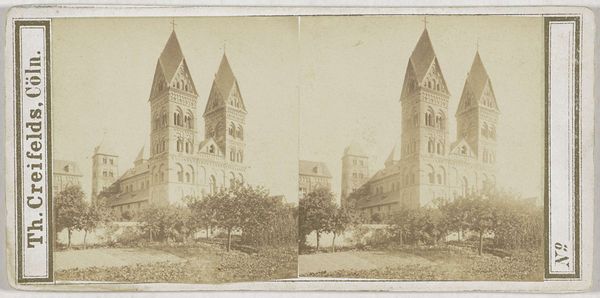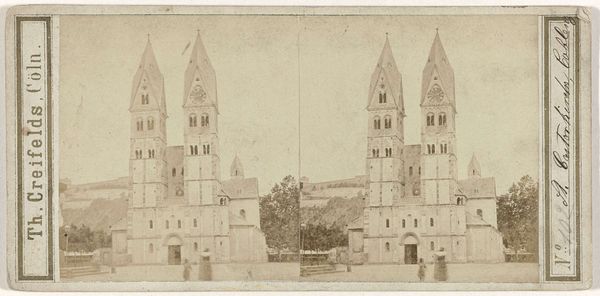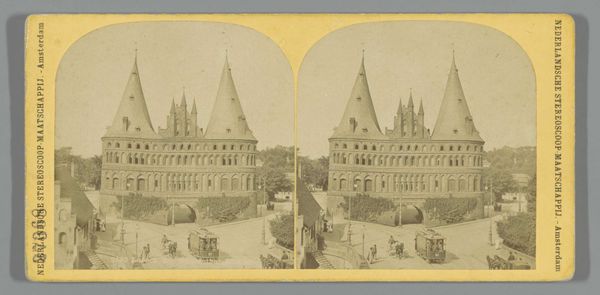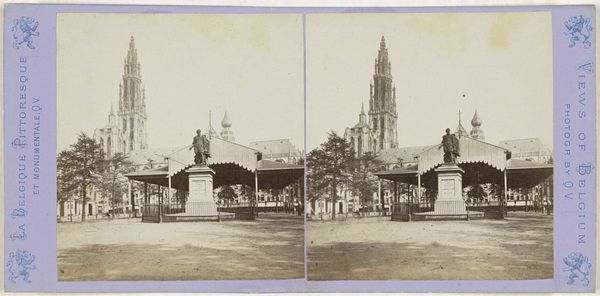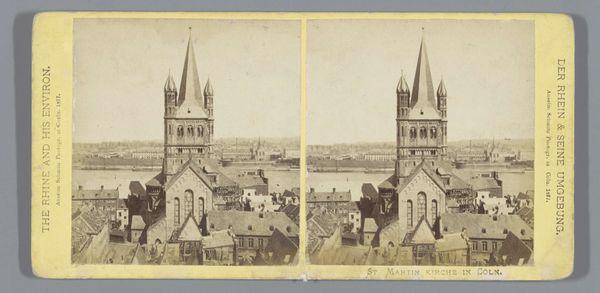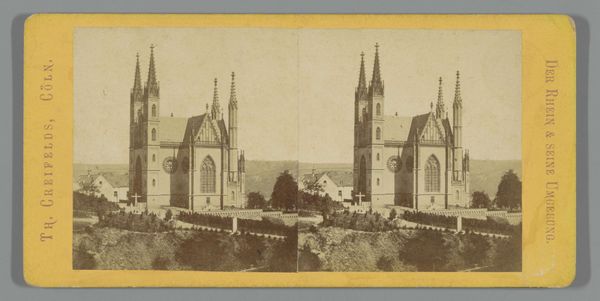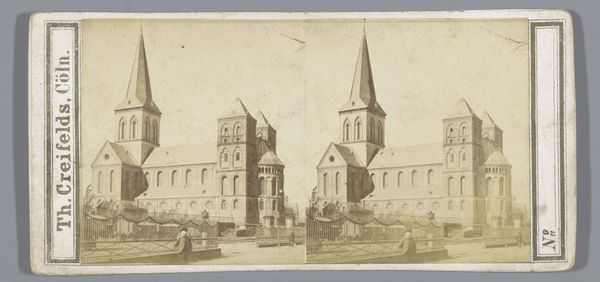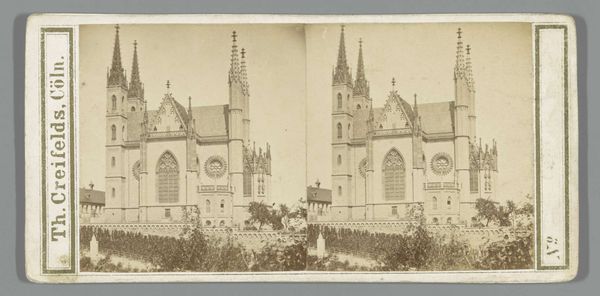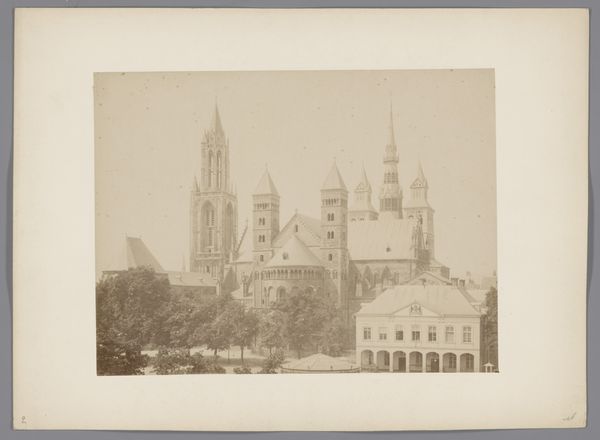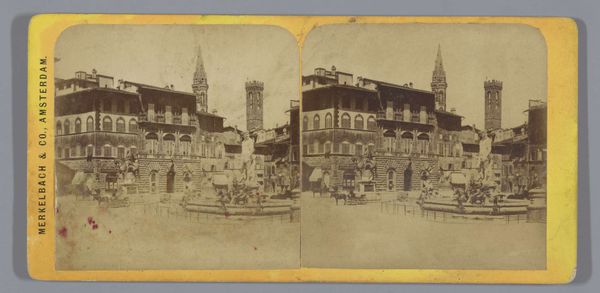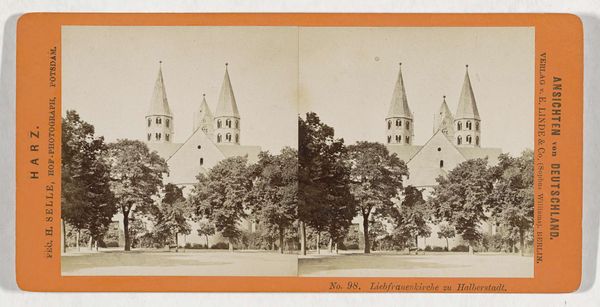
print, photography
# print
#
landscape
#
photography
#
cityscape
#
watercolor
#
realism
Dimensions: height 85 mm, width 171 mm
Copyright: Rijks Museum: Open Domain
Curator: Theodor Creifelds, known for his detailed cityscapes, captured this view of the Munster van Bonn, likely sometime between 1859 and 1875, employing photography and printmaking processes. Editor: Immediately striking. The stark, almost skeletal, architecture against the bare landscape creates a palpable mood of solemnity, wouldn’t you say? A silent monumentality seems to exude. Curator: It's intriguing to consider the technology at play. This work demonstrates a convergence of photography and printmaking techniques—a fascinating blend, offering a kind of mass production married with meticulous detail, allowing these images to become more widely distributed than, say, a painting of the same scene. Editor: And to unpack that mass production further, it becomes an act of shaping collective memory and constructing narratives around specific sites of power, isn’t it? Churches, public buildings. Whose stories get prioritized, and for whom? This image, with its inherent biases of the era, perpetuates potentially excluding narratives related to gender and social hierarchy within religious settings. Curator: Absolutely. And consider the materiality, not just the photographic chemicals and paper, but the labor involved, not merely of the photographer, but also the builders and architects responsible for constructing that impressive structure in the first place. It all contributes to a complex story of resource extraction and aesthetic preferences. Editor: Yes, it prompts questions. Who had the resources to even be portrayed? Are we really considering just one perspective, overlooking the communities that the church’s authority impacts? This landscape serves as a symbol laden with the baggage of religion. It raises crucial conversations about our present, even as we study these visual relics from the past. Curator: I'm compelled to return to the production; how many copies of this image were printed, dispersed and into whose hands did they fall? Understanding circulation is the key to unraveling its social influence. Editor: I would also add understanding circulation is only half of what’s required: we should discuss the agency it gave its patrons in interpreting narratives about religious might and power. Curator: Perhaps this highlights the value of interdisciplinary approaches for unpacking artwork. Thank you, these were invaluable insights. Editor: Always. Together, hopefully, we’ve managed to unpack some interesting perspectives on the lasting legacy of visual representation!
Comments
No comments
Be the first to comment and join the conversation on the ultimate creative platform.
